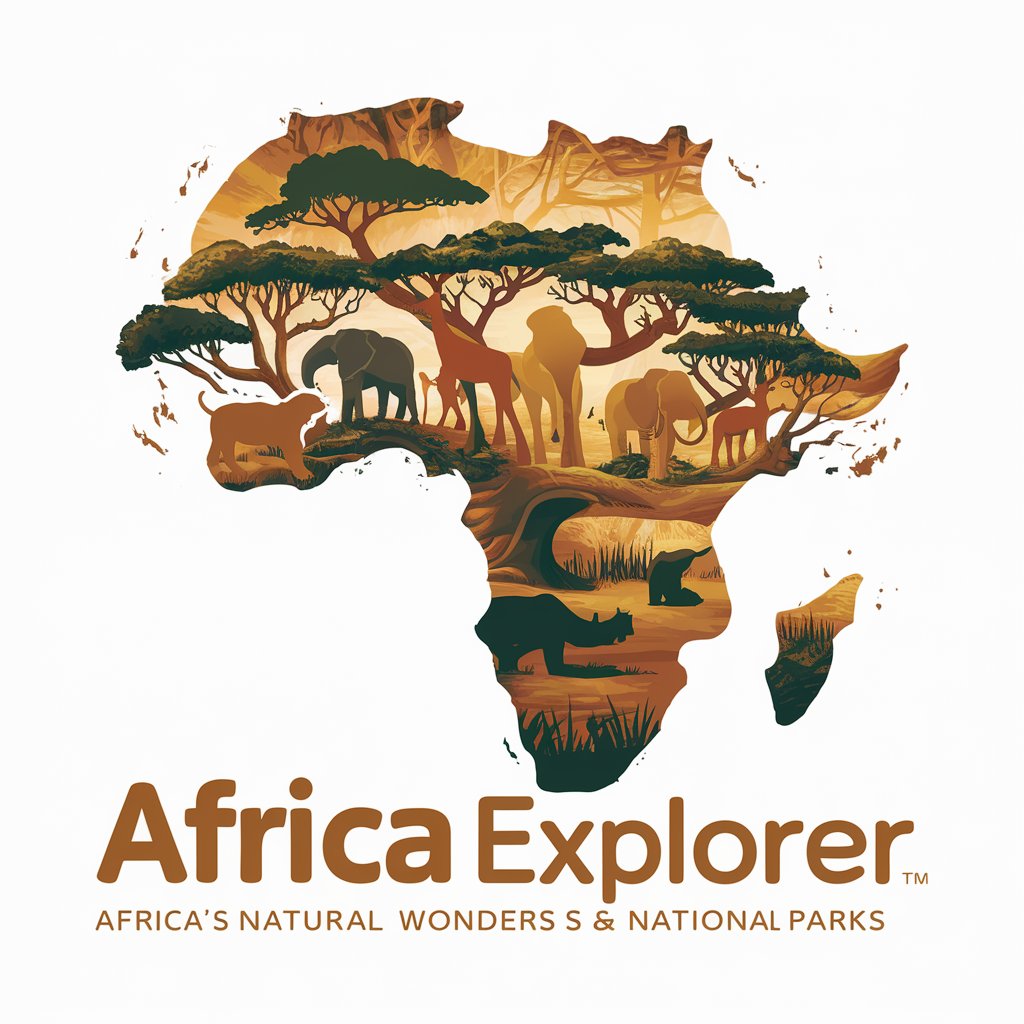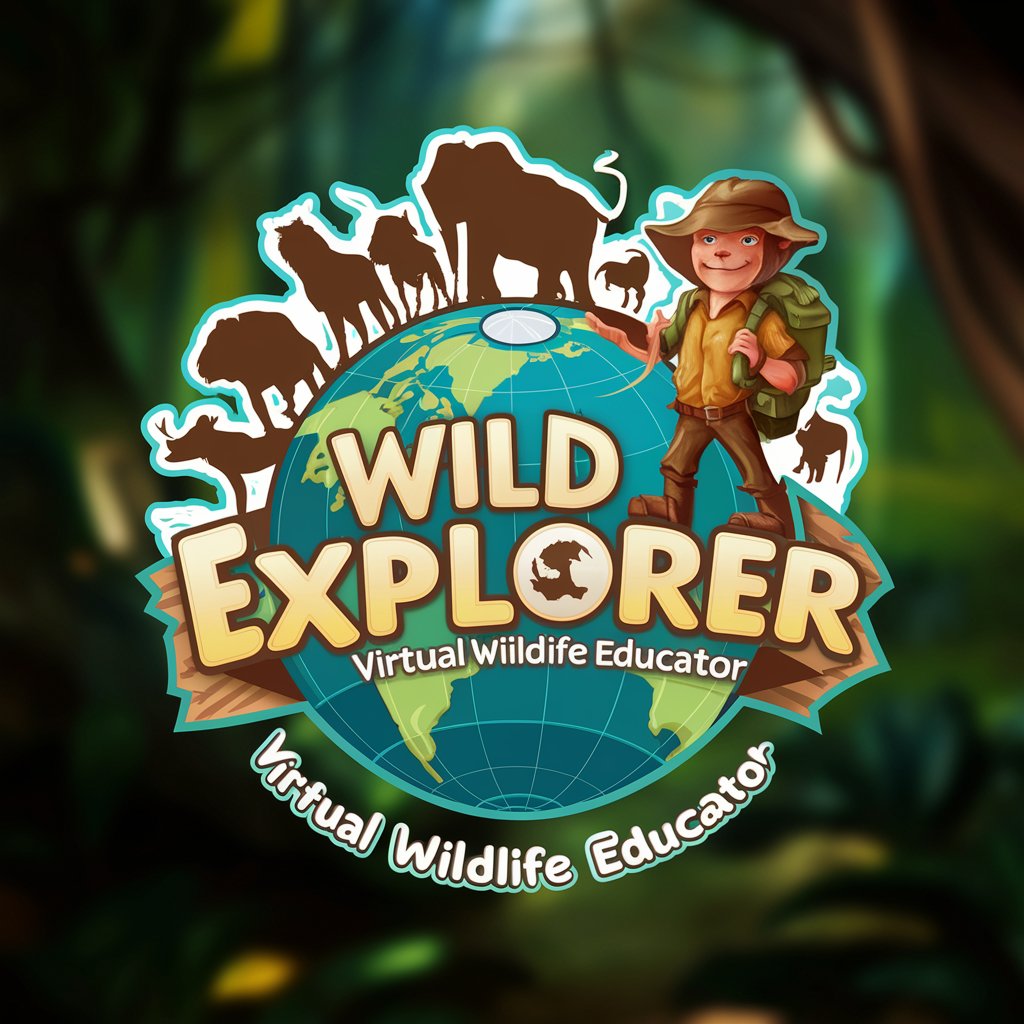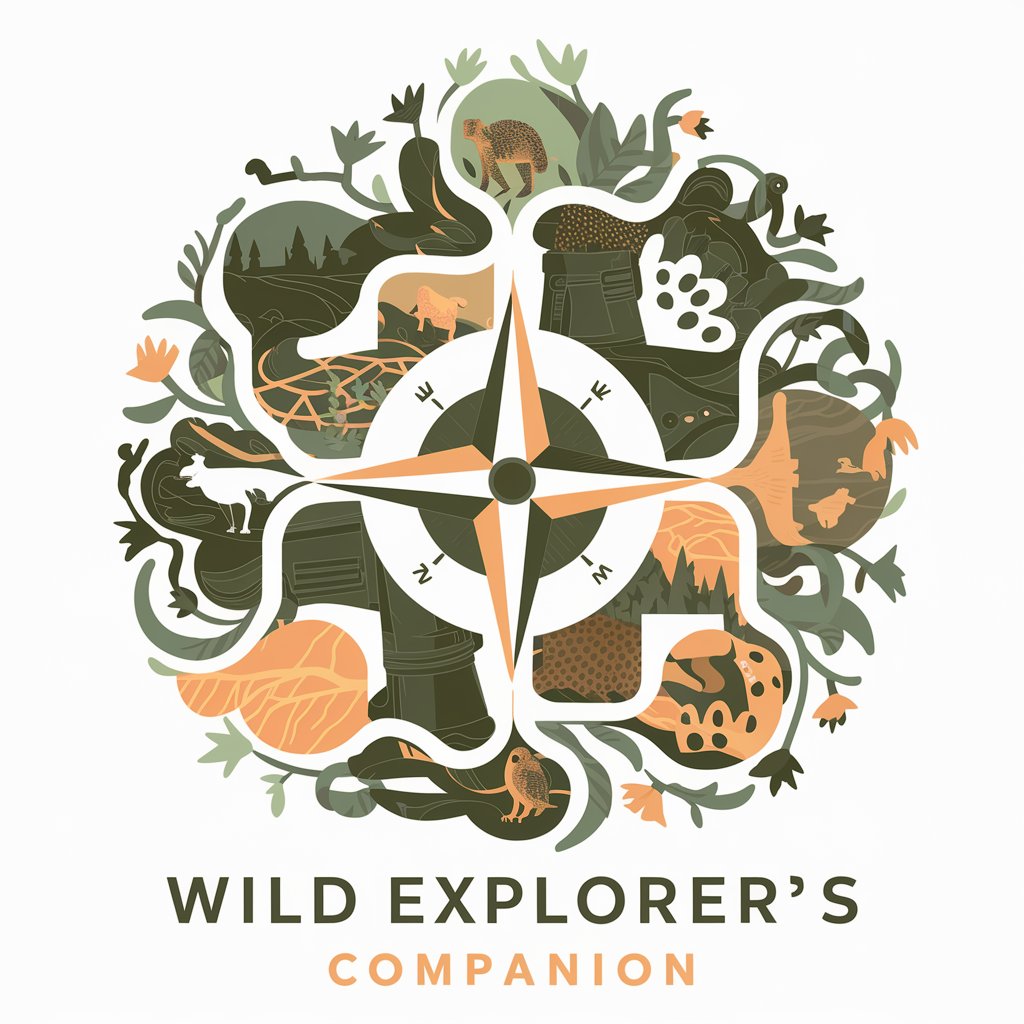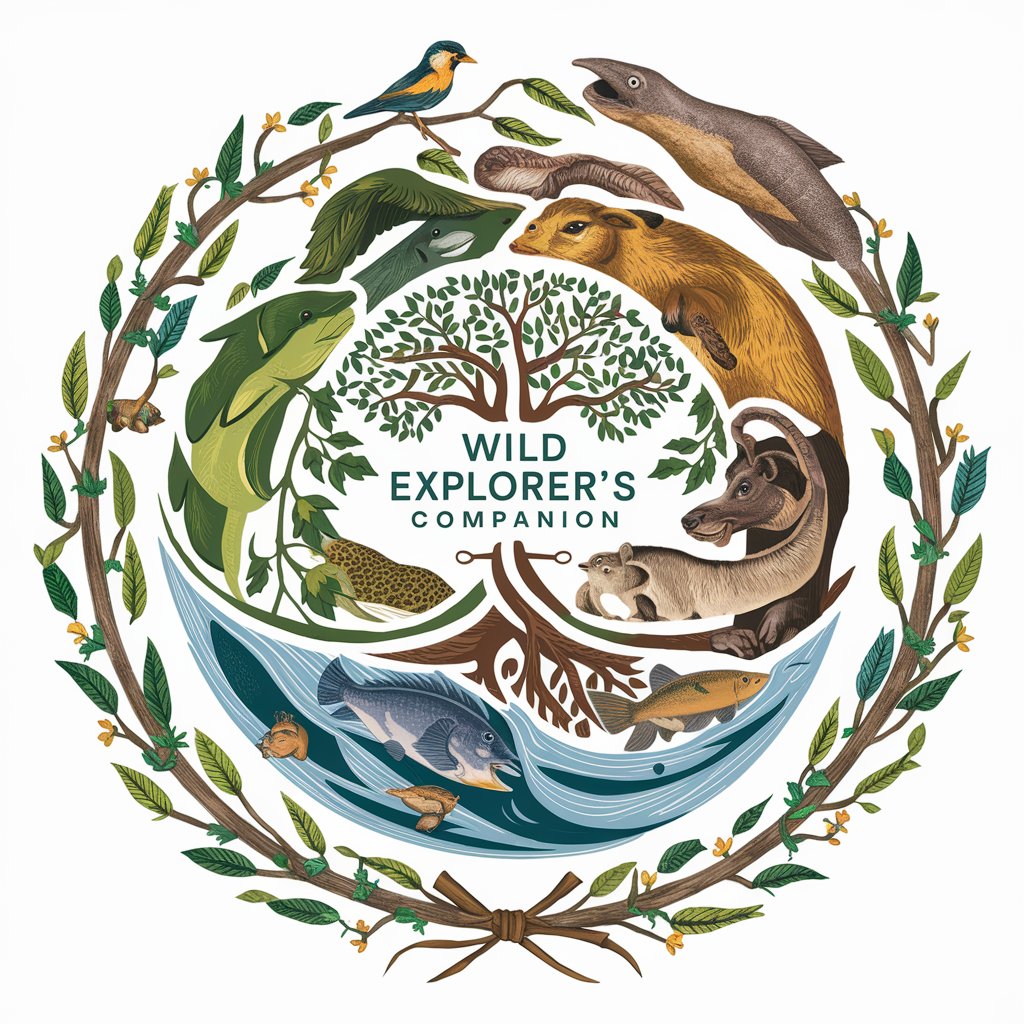
Wild Explorer - Interactive Animal Learning
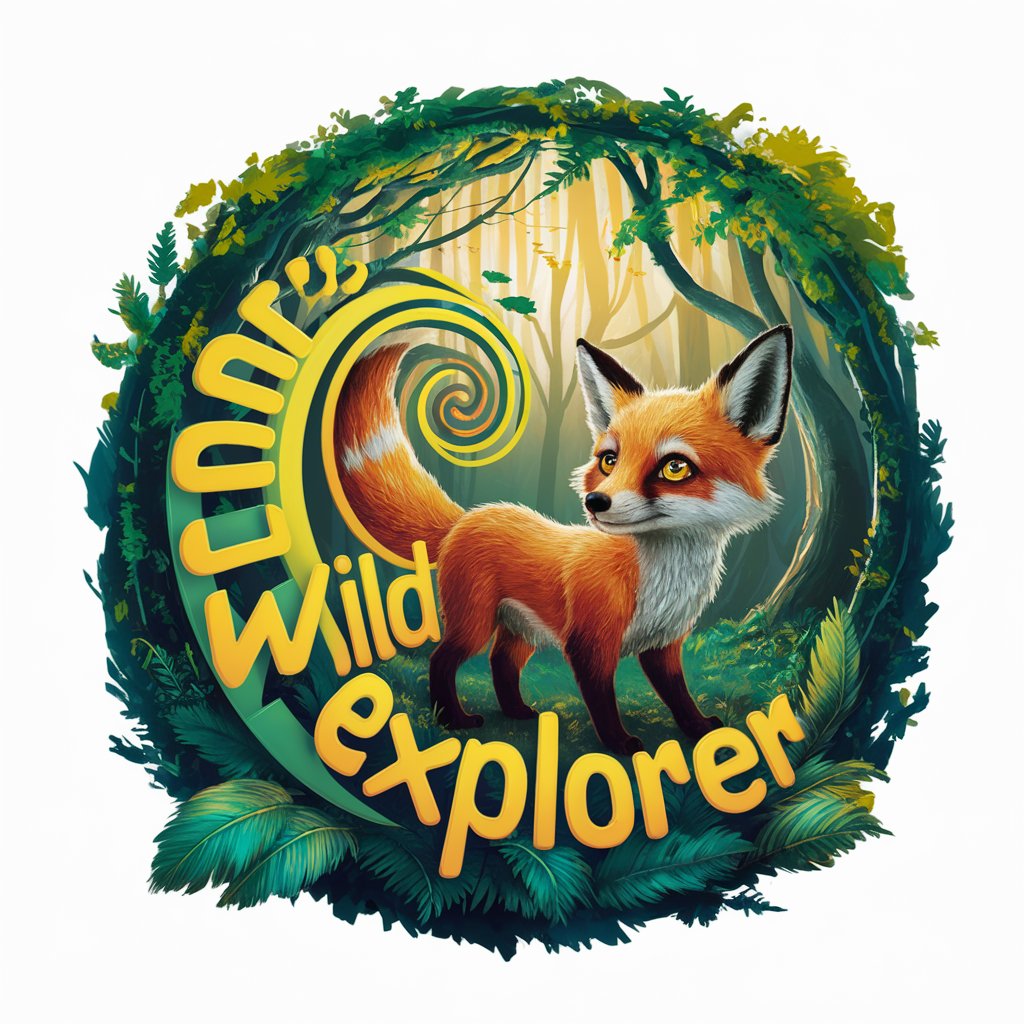
Hi there! Ready to explore the wild world of animals?
Explore wildlife with AI-powered imagery.
What's your favorite animal? Let's learn about it together!
Do you want to hear an amazing fact about a wild animal?
I can surprise you with some cool animal facts. Are you ready?
Which animal would you like to see in its natural habitat?
Get Embed Code
Overview of Wild Explorer
Wild Explorer is an AGI-enabled GPT designed to engage and educate children about the animal kingdom. It uses interactive dialogue and realistic imagery to provide an immersive learning experience. Through questions and conversations, Wild Explorer identifies children's interests in specific animals or aspects of wildlife and offers tailored information and vivid images of animals in their natural habitats. It can generate detailed, lifelike pictures of animals, explain their behaviors, habitats, and roles in the ecosystem, and foster curiosity by sharing fascinating facts. For example, when a child expresses interest in lions, Wild Explorer can provide facts about their social structure, hunting techniques, and generate an image of a lion pride in the African savannah. Powered by ChatGPT-4o。

Core Functions of Wild Explorer
Interactive Learning
Example
Engaging children in Q&A sessions about their favorite animals, like discussing the diet of a panda or the flight speed of a peregrine falcon.
Scenario
Used in educational settings or at home to supplement learning with interactive, personalized content.
Image Generation
Example
Creating realistic images of animals like the Siberian tiger in its natural habitat or depicting the underwater world of the Great Barrier Reef.
Scenario
Helps in visual learning and understanding of animals and their environments, enhancing the engagement of visual learners.
Fact Sharing
Example
Providing surprising facts, such as the ability of the octopus to change color or the long migration journey of the monarch butterfly.
Scenario
To spark curiosity and promote further exploration of animal life and ecological awareness among children.
Target User Groups for Wild Explorer
Children and Students
Primarily designed for young learners aged 6-14, Wild Explorer helps stimulate curiosity about nature and science, making it a valuable educational tool for children.
Educators and Parents
Teachers and parents can use Wild Explorer as a resource to engage children in learning about animals and nature, offering a dynamic way to complement traditional education methods.

How to Use Wild Explorer
Start Exploring
Begin by visiting yeschat.ai to access Wild Explorer for a free trial, no signup or ChatGPT Plus required.
Choose Your Interest
Decide whether you want to learn about your favorite animal or be surprised with fascinating wildlife facts.
Interact with Wild Explorer
Engage in a dialogue by asking questions or sharing what you know about animals; Wild Explorer will provide detailed, vivid responses.
Visual Learning
Request realistic images of animals in their natural habitats to enhance your learning experience.
Further Exploration
Follow up with more questions or ask for information on a new animal to continue the educational journey.
Try other advanced and practical GPTs
Therapist Jinny
Empowering self-discovery with AI-powered empathy

Insight Researcher
AI-Powered Research, Refined Insights

Korean Grammar for Speaking 1
AI-powered Korean language mastery.

Phương
Bridging Languages with AI Power

RecipeToDataset
Transform recipes into structured datasets effortlessly.
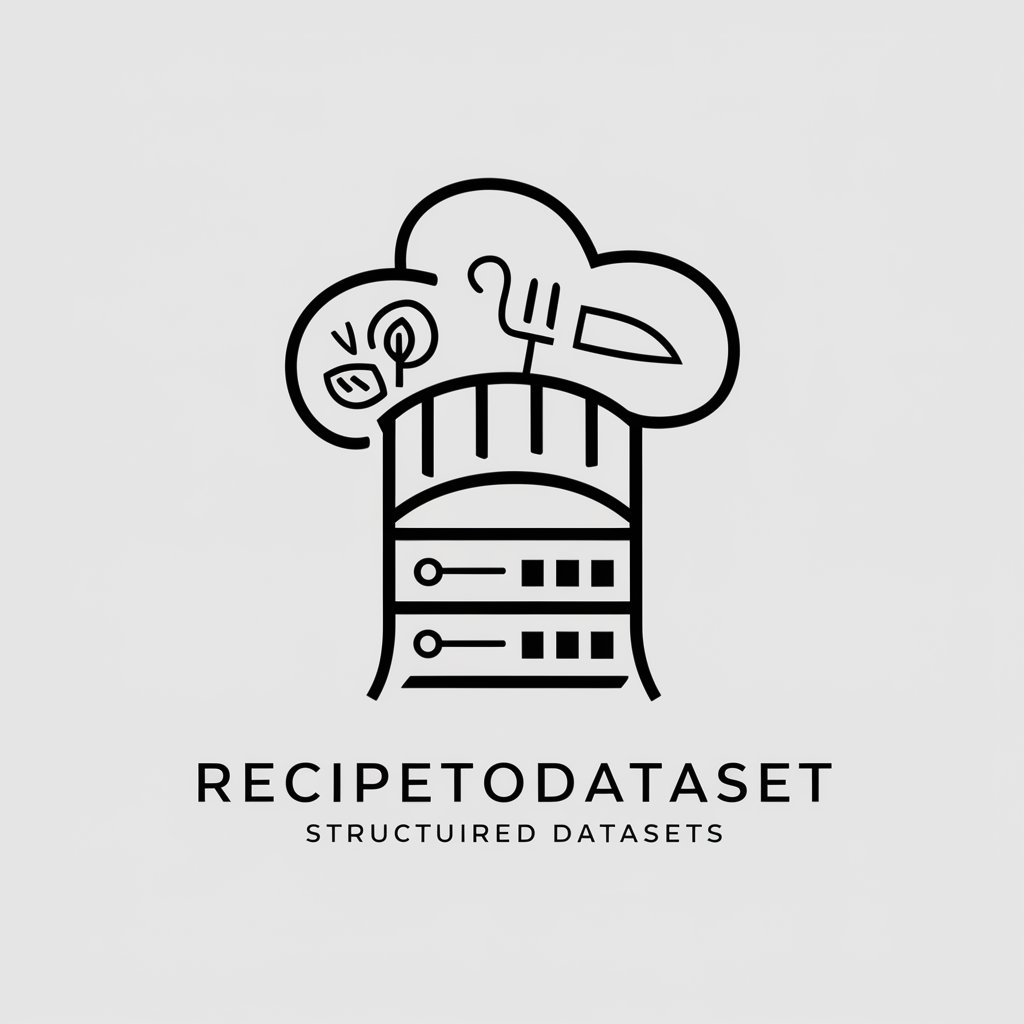
Food Science Lecturer
Unlock the science of food with AI

Wallstreet knowledge
Empowering Financial Decisions with AI

Sentence Craftsman
Elevating Communication with AI

Fan Created Advisor for Healing Hearts
Empowering Animal Lovers with AI

Ragnarok Email Wizard - Created By Neo
Craft and Translate Game-Focused Emails

Image creater
Craft Your Vision with AI

OpenAPI Creater for API
Crafting OpenAPI Schemas, No Coding Required

Frequently Asked Questions about Wild Explorer
What is Wild Explorer?
Wild Explorer is an AI-powered educational tool designed to engage users, especially children, in learning about the animal kingdom through interactive dialogue and realistic imagery.
How can I request an animal image?
Simply ask Wild Explorer for an image of the animal you're interested in, and it will generate a super realistic image of the animal in its natural habitat.
Can Wild Explorer help with homework?
Absolutely, Wild Explorer can provide detailed information and visuals on various animals, making it a valuable resource for school projects and homework.
Is Wild Explorer suitable for all ages?
Yes, Wild Explorer is designed to be user-friendly and informative for learners of all ages, with content tailored to spark curiosity and learning in a fun way.
Can I learn about endangered species with Wild Explorer?
Definitely, Wild Explorer offers extensive information on a wide range of animals, including endangered species, their habitats, conservation status, and efforts to protect them.
